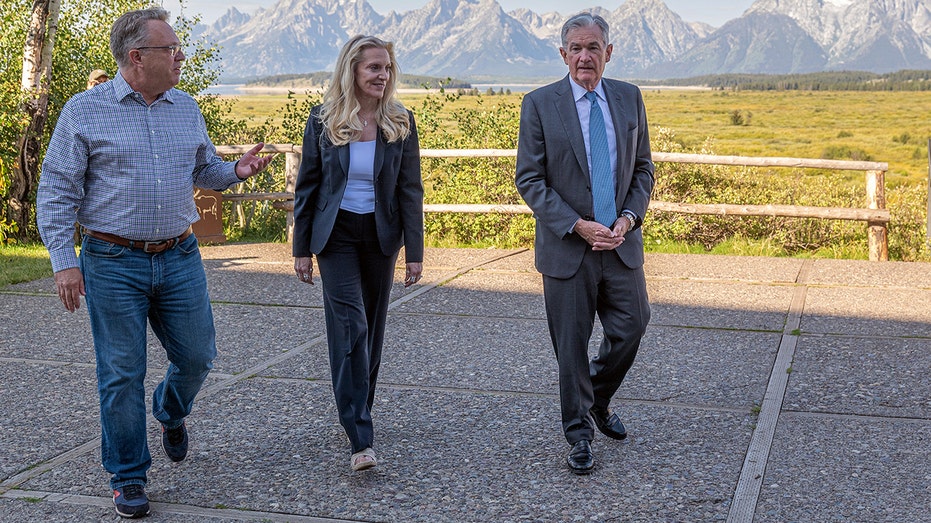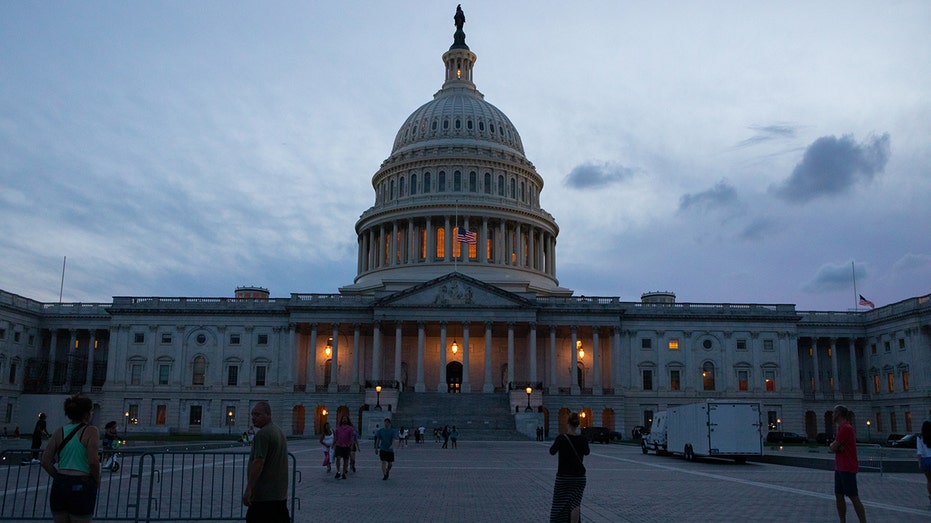Fed rate hikes won't stop inflation if government spending stays high, paper says
Chase chief economist: Going to take ‘a lot of hard work’ to bring inflation down
Former Chase chief economist Anthony Chan argues employment growth is ‘very, very strong’ as U.S. grapples with economic challenges.
Federal Reserve Chair Jerome Powell reiterated a pledge last week to "forcefully" wrestle inflation under control, no matter the broader economic cost.
But a paper released by researchers at Johns Hopkins University and the Chicago Federal Reserve on the same day as Powell's keynote speech in Jackson Hole suggests the U.S. central bank may fail to cool consumer prices with its interest rate hikes unless government spending slows down in tandem.
"The recent fiscal interventions in response to the COVID pandemic have altered the private sector’s beliefs about the fiscal framework, accelerating the recovery, but also determining an increase in fiscal inflation," the paper said. "This increase in inflation could not have been averted by simply tightening monetary policy. The conquest of post-pandemic inflation requires mutually consistent monetary and fiscal policies to avoid fiscal stagflation."
In other words, taming the inflation crisis that has gripped the U.S. for more than a year requires the Fed to tighten monetary policy, in addition to the federal government pumping the brakes on spending.
FED RAISES INTEREST RATES BY 75 BASIS POINTS IN ANOTHER HISTORIC MOVE TO TACKLE INFLATION
Fed Chairman Jerome Powell, right, Lael Brainard, Fed vice chair, and John Williams, president and CEO of the Federal Reserve Bank of New York, at the Jackson Hole economic symposium in Moran, Wyoming, on Friday, Aug. 26, 2022. (David Paul Morris/Bloomberg via Getty Images / Getty Images) The authors – Francesco Bianchi, an economics professor at Johns Hopkins University, and Leonardo Melosi, a senior economist at the Chicago Fed – blamed the massive amounts of spending in response to the COVID-19 crisis for much of the inflation spike. Prices soared as high as 9.1% over the past year, the highest since 1981, though they have since moderated slightly at 8.9% in July. In the span of just two years, Congress unleashed a torrent of federal money to shield the economy from the coronavirus pandemic, approving roughly $6 trillion in relief measures. Lawmakers approved about $2 trillion under President Biden and $4.1 trillion under former President Donald Trump, according to a COVID money tracker published by the Committee for a Responsible Federal Budget, a nonpartisan organization based in Washington. Biden and congressional Democrats have also approved a roughly $790 billion health care and climate change spending bill – about half of which will go toward paying down the deficit – in addition to canceling up to $10,000 in student loans for millions of borrowers and $20,000 for Pell Grant recipients. The Committee for a Responsible Federal Budget has estimated that could cost up to $600 billion. The paper suggests that as a result, the Fed can only reduce inflation once "public debt can be successfully stabilized by credible future fiscal plans." Without limitations on federal spending, rate hikes will only make the cost of servicing the $30 trillion national debt more expensive, pushing inflation higher. "Increasing rates, by itself, would not have prevented the recent surge in inflation, given that large part of the increase was due to a change in the perceived policy mix," the authors said. "In fact, increasing rates without the appropriate fiscal backing could result in fiscal stagflation. Instead, conquering the post-pandemic inflation requires mutually consistent monetary and fiscal policies providing a clear path for both the desired inflation rate and debt sustainability." The paper was published just one day after Powell stressed that fighting inflation remains the Fed's No.1 priority and pledged to rein it in with a series of rate hikes that he warned would cause economic "pain" for millions of households and businesses. "While higher interest rates, slower growth and softer labor market conditions will bring down inflation, they will also bring some pain to households and businesses," he said. "These are the unfortunate costs of reducing inflation. But a failure to restore price stability would mean far greater pain." The U.S. Capitol on Aug. 6, 2022 in Washington. (Anna Rose Layden/Getty Images / Getty Images) Even with four consecutive interest rate hikes, including two back-to-back 75-basis-point increases, Powell stressed that the Fed is not in a place to "stop or pause" – an unwelcome sign for investors who were predicting a rate cut next year. CLICK HERE TO READ MORE ON FOX BUSINESS The current benchmark federal funds range of 2.25% to 2.50% is around the "neutral" level, meaning that it neither supports nor restricts economic activity. But the Fed chief signaled that a restrictive stance will almost certainly be necessary as the central bank tries to pump the brakes on the economy. "We are moving our policy stance purposefully to a level that will be sufficiently restrictive to return inflation to 2%," Powell said, suggesting that "restoring price stability will likely require maintaining a restrictive policy stance for some time. The historical record cautions strongly against prematurely loosening policy." Source: Read Full Article


